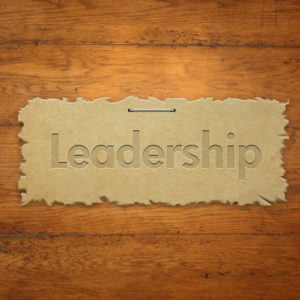The Trouble with Leadership Training

Mike Myatt, one of my favorite Forbes contributors wrote in a recent article on leadership development, “most [leadership training programs] don’t even come close to accomplishing what they were designed to do—build better leaders.”
Myatt asserts that the terms “training” and “development” have become synonymous in executive parlance in recent years, when in fact they are significantly different. Without distinguishing the 2 types of learning approaches, corporate training departments are often left wondering why leaders are disengaged, fail to produce expected results, and don’t stay with the company more than a couple of years.
 In the traditional sense, training is used to indoctrinate new employees, demonstrate “how we do things around here”, and establish expectations around company norms, processes, and systems. Training is rote and often times involves a one-to-many type of delivery and may not be effective unless the learning is applied by the “student”.
In the traditional sense, training is used to indoctrinate new employees, demonstrate “how we do things around here”, and establish expectations around company norms, processes, and systems. Training is rote and often times involves a one-to-many type of delivery and may not be effective unless the learning is applied by the “student”.
Training may also be short-sighted, helping employees more efficiently accomplish near term tasks but ignoring the larger landscape of sustaining solid business growth. If creating inspirational leaders to guide your organization confidently into an uncertain future is the end goal, leadership training may not be your best investment.
Development, on the other hand, is more about the journey than the destination. Developing great leaders is a process that takes time, effort, and support from the entire organization.
Leadership development focuses on the unique strengths of each individual, and allows for a dynamic, organic approach that does not assume a single “best practice” for leaders. Additionally, transformational development programs should be collaborative, ongoing, iterative, and available for leaders at all levels.
Myatt points out several other differences between training and development. Here are a few of my favorites on leadership training:
1. Training focuses on the present. Development focuses on the future.
2. Training focuses on the role. Development focuses on the person.
3. Training indoctrinates. Development educates.
4. Training focuses on maintenance. Development focuses on growth.
5. Training focuses on problems. Development focuses on solutions.
Leadership programs that leverage these distinctions between training and development have been proven to be more successful.
Research from the Human Capital Institute has shown that organizations that take more of a “development” approach see better results in alignment, collaboration, succession, and execution of strategic initiatives.
Organizations that develop their leaders in addition to providing customized training options are able to produce teams that enjoy a shared purpose, more effective communication, and a greater sense of ownership of the strategic direction of the company.
Leaders who have a common vision for the future – and who have been given a voice to develop the plan to get there – are much more engaged and more likely to remain a part of the team for years to come.
As Matt Myatt said, “It is impossible to have an enterprise which is growing and evolving if leadership is not.” How is your organization developing leaders to create a better future?
Category: Business Growth & Strategy Leadership Talent Management
Tags:


There will be always a pros-and-cons result in leadership training. So, it is much better that a person prepares himself/herself to any troubles he/she may encounter while on the training.
Jane Goldner
http://thegoldnergroup.com/services/consulting/
Jane,
Thanks for reading – I appreciate your thoughts. Keep an eye out for my next post, which will provide important considerations for designing an effective leadership development program.
John
I think this is a brilliant, concise and resoundingly clear discussion of the essential and defining differences between training and development. As a professional development expert targeting the corporate world, I’ve long strained against the concept of “training” for all the reasons cited in the piece but have come smack up against resistance from entrenched HR/ L&D thinking. Training is rote and confirmative and, if we’ve learned nothing else from the last past Great Recession it should be that conformed thinking is toxic. We live in a fast changing world that requires adaptive, flexible, solution-focused critical thinking that, as the piece says, is iterative, expansive and looks to the future. I’m thrilled that these concepts were so brilliantly articulated. Thank you!!!
Thanks, Dani! I think that many people are starting to understand and embrace a new way of thinking, but this type of change in what are usually known as “best practices” will take time. A few organizations are out front with innovative development programs, and we’ll see others follow once the results are more widely recognized. — JR
From your words:
6. Training is an event. Development is a lifelong process.
As a follow on I would like to understand how you would express the links between Training and Leadership through improvement in skills. I understand that this discussion necessarily draws sharp distinctions between Training and Leadership but how do you see points of intersection, if any?
Jim, my apologies that I didn’t see your comment earlier – thanks for the great question. I certainly do see an intersection of training and development, but my point here was that we should not make the terms interchangeable. In my opinion, development efforts for leaders should complement and build on training initiatives. For example, if you’ve implemented a leadership training program for younger leaders within your company, you should consider how to ensure participants are able to apply that learning going forward. A robust development program that allows participants to discuss, reflect and take action on what they’ve learned will ensure that they understand what they’ve been “taught” through training; and will accommodate for any situational factors that may arise because of changes in the organization, strategy, or priorities.